Lattice multiplication
Key Notes :
🎈 Step 1: Make a table with the digits of the first factor along the top and the digits of the second factor down the right. Draw diagonal lines from the top right to the bottom left of each box in the table.
🎈 Step 2: Multiply the digits and enter their products in the table. The diagonal in each box separates the digits in each product. For 1-digit products, put a 0 to the left of the diagonal.
🎈 Step 3: Sum each diagonal starting from the bottom right. For sums greater than 10, carry into the diagonal up and to the left.
🎈 Step 4: Rewrite these sums as a string of digits in order from top to bottom, then left to right. This is the product of the original factors.
Learn with an example
🎯Use the lattice method to find 41×42.
🎯 Calculate the sum of each diagonal. Your answers for the sums will fill in the answer for the product.
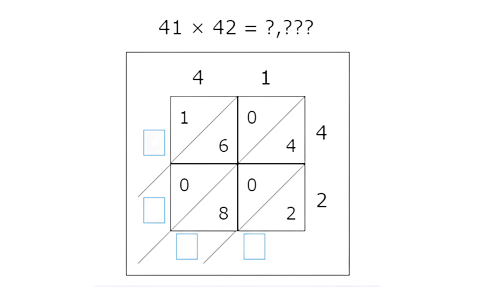
📗 Step 1
To multiply two numbers using the lattice method, make a table with the digits of the first factor along the top and the digits of the second factor down the right. Draw diagonal lines from the top right to bottom left of each box in the table.
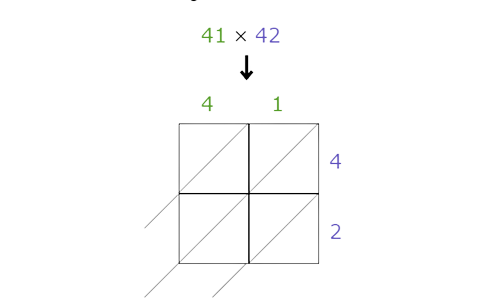
📗 Step 2
Multiply the digits and enter their products in the table. The diagonal in each box separates the digits in each product. For 1-digit products, put a 0 to the left of the diagonal.
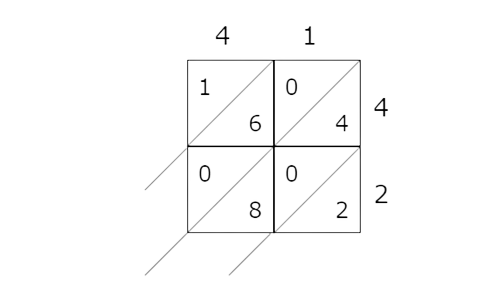
📗 Step 3
Sum each diagonal starting from the bottom right. Make sure to carry for sums greater than 10. Here are the first two diagonals shown:
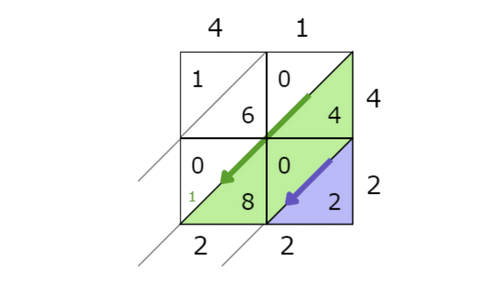
- Notice the carried digit, 1. Find the sums for the rest of the diagonals.
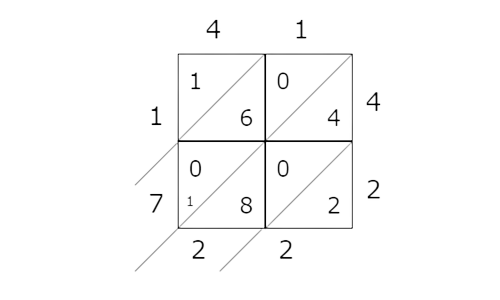
📗 Step 4
Rewrite these sums as a string of digits in order from top to bottom, then left to right. This is the product of the original factors.
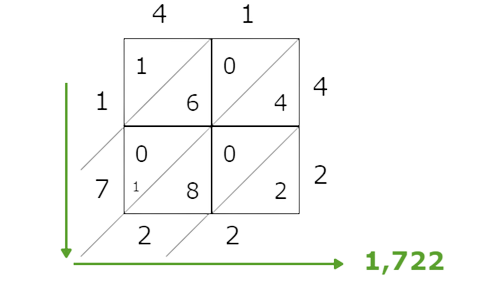
- So, 41×42=1,722.
🎯 Use the lattice method to find 58×66.
🎯 Calculate the sum of each diagonal. Your answers for the sums will fill in the answer for the product.
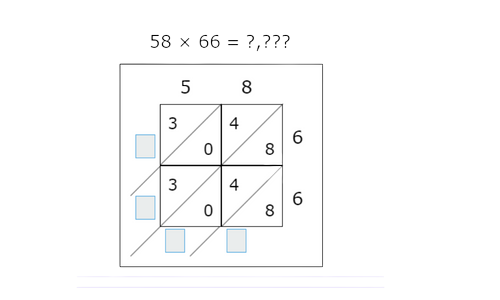
📗 Step 1
To multiply two numbers using the lattice method, make a table with the digits of the first factor along the top and the digits of the second factor down the right. Draw diagonal lines from the top right to the bottom left of each box in the table.
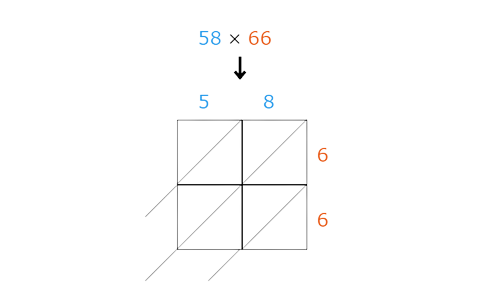
📗 Step 2
Multiply the digits and enter their products in the table. The diagonal in each box separates the digits in each product. For 1-digit products, put a 0 to the left of the diagonal.
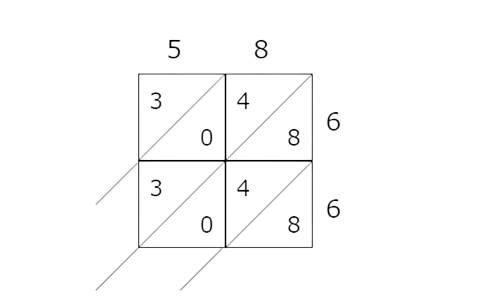
📗 Step 3
Sum each diagonal starting from the bottom right. Make sure to carry for sums greater than 10. Here are the first two diagonals shown:
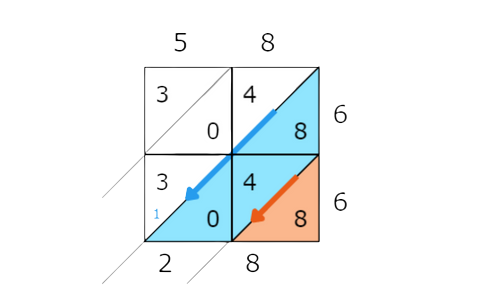
- Notice the carried digit, 1. Find the sums for the rest of the diagonals.
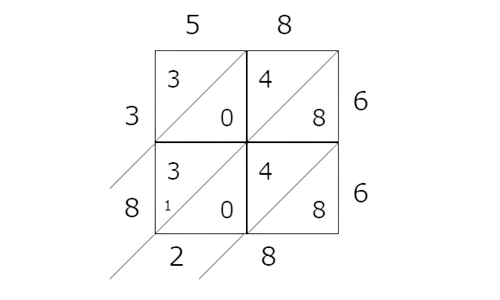
📗 Step 4
Rewrite these sums as a string of digits in order from top to bottom, then left to right. This is the product of the original factors.
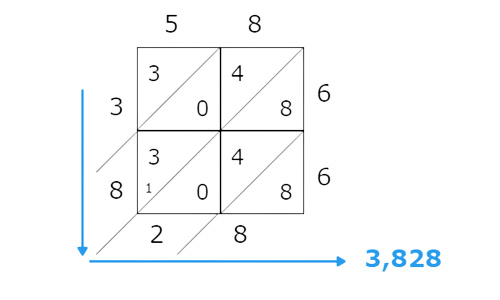
- So, 58×66=3,828.
🎯 Use the lattice method to find 77×48.
🎯 Calculate the sum of each diagonal. Your answers for the sums will fill in the answer for the product.
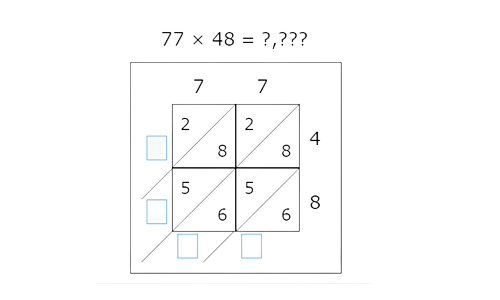
📗 Step 1
To multiply two numbers using the lattice method, make a table with the digits of the first factor along the top and the digits of the second factor down the right. Draw diagonal lines from the top right to the bottom left of each box in the table.
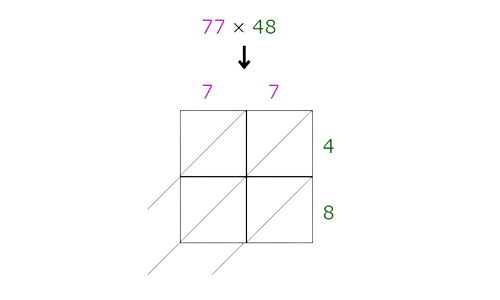
📗 Step 2
Multiply the digits and enter their products in the table. The diagonal in each box separates the digits in each product. For 1-digit products, put a 0 to the left of the diagonal.
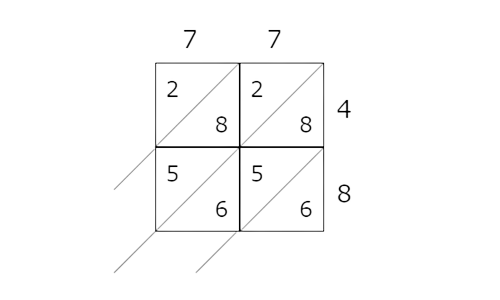
📗 Step 3
Sum each diagonal starting from the bottom right. Make sure to carry for sums greater than 10. Here are the first two diagonals shown:
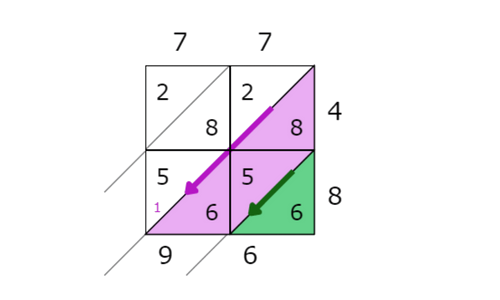
- Notice the carried digit, 1. Find the sums for the rest of the diagonals.
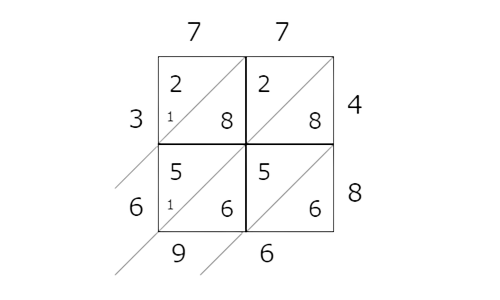
📗 Step 4
Rewrite these sums as a string of digits in order from top to bottom, then left to right. This is the product of the original factors.

- So, 77×48=3,696.
Let’s practice!🖊️

